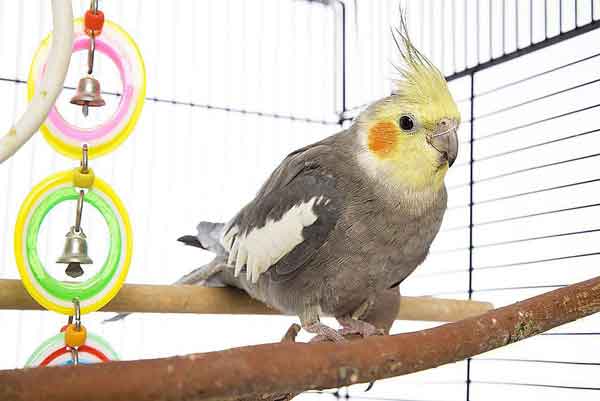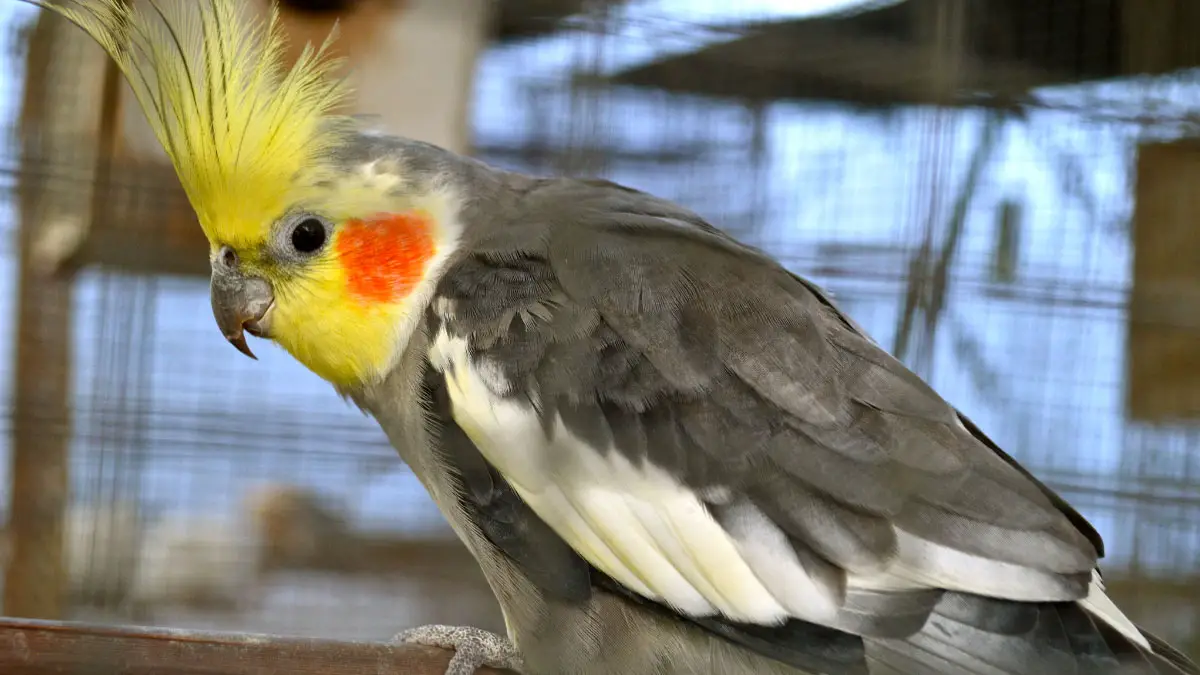The process of raising cockatiels is enjoyable. The reason is raising this chirpy little bird does not require much effort. Cockatiels may be quite sensitive, but you will be able to handle them.
Here we have crafted cockatiel care: a beginners guide to food, habitat, and raising, which talks about everything you need to know for raising your loving bird. It includes their eating habits and what they should not be served. It also illustrates how to improve their environment and show them care. Besides, it also includes how to have their health checked regularly.
Simply follow this guide, and we guarantee that this little cockatiel will be raised and cared for in an ideal way that you can take pride in.
Cockatiel Care: A Beginners Guide To Food, Habitat, Raising
The cockatiel, also known as Nymphicus hollandicus, is an indigenous bird of Australia. These birds belong to the parrot family. Despite their small size, cockatiels are colorful, chirpy birds. The cockatiel is renowned for its friendly nature. They are adorable, cuddly, and curious all the time. They are the best companion as pet birds.
Cockatiels are much more active, responsive, and playful than other pet birds. They don’t get bored easily. Owners don’t have to spend much time raising them, but they need to be taken care of. Because of these qualities, people favor cockatiels over other types of birds.

Cockatoos require nutrient-rich, well-balanced food. Their daily dietary needs is satisfied by pellet food. They also enjoy a variety of fruits and vegetables. Additionally, clean water is necessary for good health.
Although cockatiels are cage-friendly, they require a good environment to live happily. Their cage should be ideal in size. There also should be toys and other additional stuff like a bathing area, food bowls, perch, and swings.
Ultimately, Cockatiels are not difficult to raise.
Cockatiel Basic Characteristics

Most of the cockatiel’s fundamental details are provided here.
Characteristics
| Cockatiels Average life Span | 20 to 25 years |
| Average Size Of Cockatiels | 11 to 15-inch |
| Diet | Pellet food/Fruits/vegetables (Herbivorous) |
| Color | Mixed |
| Mass | 70 to 120g |
| Scientific Name | Nymphicus hollandicus |
Cockatiels Habitat
Cockatiels needed the ideal habitat for their living. A cage that is 24-inch long, 18-inch wide, and 24-inch depth would make up the perfect habitat. However, it would be much better if it were even larger and the bird could fly inside.
The temperature of the room should be 18 to 26-degree celsius. Frequent temperature change is harmful to cockatiels. Thus, temperature stability ought to be present. The space must have good lighting and proper ventilation.

Cockatiels are somewhat sensitive to other animals. So any suspicious animals or pets should not be present near the habitat.
Things You Should Place Inside the Cage
Cockatiels love perches, toys, swings, bathing areas, and rocks (litters) inside their cage. As you know, cockatiels are playful, and different toys can be placed in the cage. Other than toys, owners also put some essential things inside. For example, food bowls, fresh water spots, and hooks for scratching.

Toys
Various kinds of toys can be kept in the cage. However, it would be preferable if the toy were lightweight and vibrant. Cockatiels adore colorful items, and since they enjoy moving their toys from one place to another, it needs to be lightweight.

Perches
It is recommended that perches are wide enough for birds’ feet to be spread evenly over them. The ideal size for perches is 6 inches. Although it can be made of any material, wood and plastic are preferred. Multiple perches can be placed if the cage is big enough.
Water And Food Bowls
Water and food bowls must be installed inside the cage separately. Bowls must be securely fastened to prevent movement and food spillage.

Other Items
A ladder can be positioned inside the cage because they love to play with this type of stuff. cockatiels like having a variety of items there.
Because they enjoy chewing, artificial chewing leaves may also be included. They may also use these to scratch their feathers.
Lighting
Cockatiels don’t necessarily need lighting, but they enjoy having it around. Owners can place a soft light close to the cage. They find it fascinating and enjoy light in addition to a dark environment.
Diet of Cockatiels: What do they typically eat?
Cockatiels are herbivorous, which means they eat almost all edible herbs. However, because cockatiels need specific nutrition, their diets should be well-balanced and picky.

Pellet
For cockatiels, various types of pellets are available. These pellets, some of which are fruit- and vegetable-based, should make up the majority of their diet. But aside from this, they also consume raw fruit and vegetables.
Fruit And Vegetable
Fruits like berries, melons, apples, papaya, kiwis and grapes are favorites of Cockatiels. It would be preferable if the owner mostly serves seedless fruit. For example, grapes, bananas, or tomatoes.
If the bird must be fed fruit that contains seeds, the seeds must first be removed from the fruit. Otherwise, it would be risky for them. The cause is that eating seeds is unhealthy. While consuming the fruits, they may choke on the seeds.

The most common vegetables for cockatiels are tomato, broccoli, carrots, beets, corn, spinach, chard, and turnip. Vegetables must be served completely fresh and cut into short pieces. Otherwise, cockatiels will have difficulty eating it.
Water
Water is essential to a bird’s health; cockatiels drink 5 to 10 grams of water daily. They don’t drink all of the water at once but rather frequently. As a result, freshwater should always be available in their cage.
What You Shouldn’t Feed Your Cockatiel
Certain foods are not healthier for cockatiels. Cockatiels should never be given:
- Avocados
- Dairy items (milk, butter, cheese)
- Sweet items or specifically sugar, chocolate, candy, ice-cream
- Italian or curly Parsley
- Oil
- Cold water or warm water
- Cassava
Cockatiels should also avoid caffeine, soft drinks, alcohol, and juice.
How To Care Cockatiels
Care for cockatiels is not too difficult. As the owner, you must spend time with them. The food must be served at the appropriate time. You must engage in frequent play with them in response to their calls. That’s all about caring cockatiels. Let’s see this in detail.

Spend Time With Your Loving Birds
A minimum of one to one and a half hours per day should be spent with your birds. It’s crucial to go along with your little pals. You complete all the necessary tasks during that time, such as serving them food, changing the water, and conversing with them.
Take Them Out
Bird enjoys playing outside and flying around a lot. Therefore, you should let your bird out of its cage at least twice a week. All you need to do is allow them to play in your home or take them to new, enjoyable locations.
Additionally, you ought to relocate their cage so they can explore new areas.
Serve Meals Routinely
Food serving times should be consistent throughout the day. Serve the food at the same time every day. Otherwise, they will react. Try to provide a variety of foods every day. And most importantly, never miss a meal.
Give Them New Toys
Cockatiels are very playful birds. They like to play with toys. You should replace their toys frequently because they eventually stop playing with old ones. They enjoy playing and exploring new toys.
Change Their Bathing Water
Change your bird’s bathing water every 2 or 3 days. They won’t use the water if it becomes dirty. Provide warm water if you can; they’d love to take a bath.
Don’t Forget To Talk
Maybe it won’t be a productive discussion but talk to your bird. They love to listen and react. It feels really good to engage in human interaction. Additionally, always respond when your birds call. You can also train your cockatiels to talk.
What are the best ways to keep your cockatiel healthy?
You have some obligations to fulfill in order to maintain the health of your tiny bud.

Check Your Birds Weight Regularly
Weight loss is a very common sign of cockatiel illness, so you should regularly weigh your bird. The ideal weight range for your bird is between 70 and 120 grams. So weigh your bird and continue to monitor its weight regularly. If you see any big change, talk to the vet.
Provide Nutritional Foods
Cockatiels only eat a small portion. As a result, you must be picky when selecting their foods. Try to provide the most nutritious food possible: protein, vitamins, minerals, and grit.
Take Them To The Vet Every Six Months
Sometimes, your cockatiels will get sick, but you will never notice. In that case, your veterinarian will advise you on what has happened to your bird and what you should do.
FAQs
If you need more information on cockatiel care, here are a few more questions and answers.
No, cockatiels are not more difficult to raise than macaws. If you’ve ever raised a macaw, you’ve probably done a lot. Cockatiels, on the other hand, do not require as much effort.
Cockatiels are a little chirpy but also gentle, whereas macaws are aggressive. There are also big differences in their food habits and living patterns, something that is relatively easy to maintain for cockatiels.
If you recently purchased a cockatiel, you must purchase a few additional items. Here it is
- Ideal size cage (24″ long by 18″ wide by 24″ Depth)
- Perches (wooden or hard plastic)
- Bathing pot
- Food bowls
- Multiple toys
- Fan and room heater for maintaining temperature
- Dim light
Although it’s not that important, you can also include a small pet house inside the cage.
It is essential to place a dim/soft light near the cage. The dark repulses cockatiels. In such a situation, if you don’t provide lights near their cage, they will react negatively. Cockatiels scream in the dark as well. They prefer soft or dim lighting at night so they can see their surroundings.
Final Words
So it’s time to wrap up this cockatiel care: a beginners guide to food, habitat, and raising. Cockatiels are sensitive, but they are not difficult to raise. Their food habits, habitat, and raising are all very straightforward. However, you must closely monitor them if you don’t want to see them sick.
You must give the right nutritional food in order to ensure their complete nutrition. Aside from that, you must provide them with the best possible living environment and interact with them on a regular basis.







